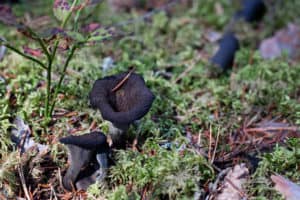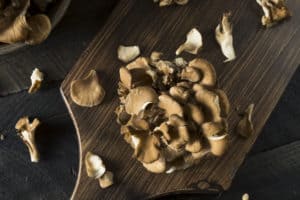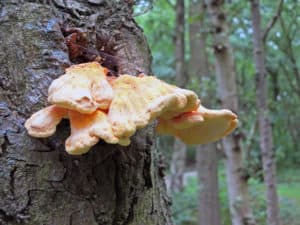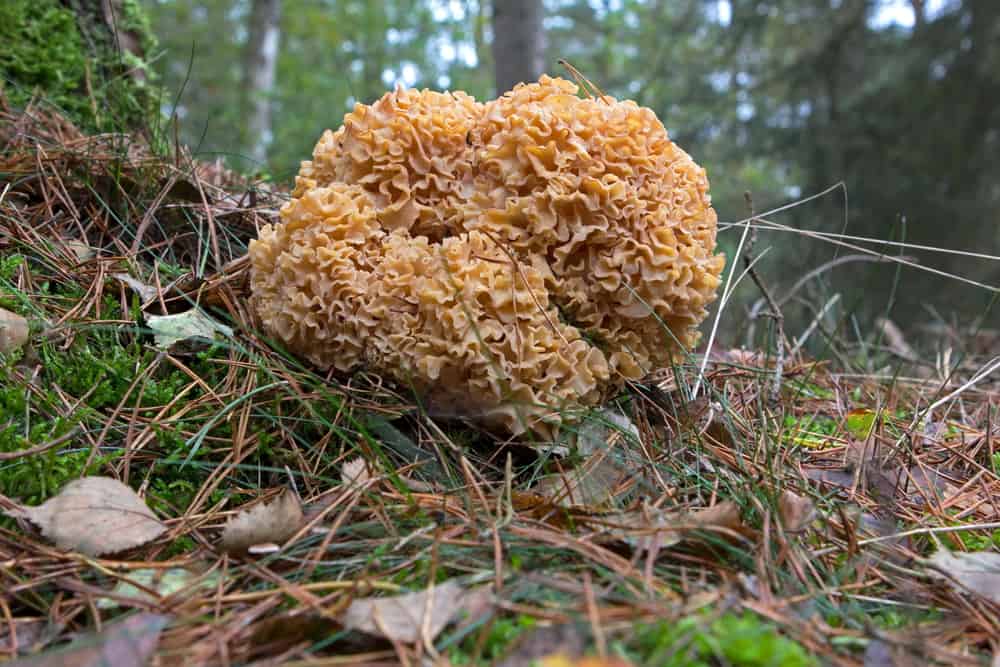There’s no denying that it’s easy to get roped into the routine of buying readily available items at your local chain grocery store. However, spicing things up by trying something new to break the monotony can make all the difference. Mushrooms come in a vast assortment of textures, shapes, flavors, and sizes. They are also compatible with various cooking techniques.
Therefore, if you don’t fancy one type of mushroom, you might be pleasantly surprised by the wild and exotic options on this list. Rare mushrooms are also high in protein, low in calories, and low in fat, with a wealth of much-needed minerals and vitamins to feel good each day. These nutrients, such as fiber, zinc, and potassium, bolster your metabolism and immune system, keeping you in tiptop health.

1. Black Trumpet
Also known as Black Chanterelle, this rare mushroom is regarded as a delicacy for various reasons. For starters, they are particularly flavorful with a bold, smoky flavor. Secondly, they are an excellent option for foraging due to the lack of poisonous mushrooms with a similar appearance. Although they are easy to pinpoint, Black Trumpet mushrooms are a rarity. They are only common near small streams and mossy areas, but even so, they are easy to miss.
2. Yellow Foot
These rare mushrooms live up to their name as their vibrant yellow stems make them conspicuous on the forest floor. The Yellow Foot species have a mild fruity flavor and pair well with steak, bacon, eggs, and other sautéed foods. They are relatively small and grow up to 4 inches in height.

3. Maitake
Also known as the ‘Hen of the Woods,’ Maitake mushrooms usually crop up at the base of trees and are native to northeast Japan and parts of America. Although these species are conventionally used in Japan and China, particularly for their potential medicinal value, they are soaring in popularity across the globe. Maitake has a bold woody, smoky flavor, more so, in cultivated strains.
4. Nameko
Besides their orange caps, Nameko mushrooms possess a distinct subtle flavor. Additionally, they are somewhat unconventional due to their jelly-like texture when cooked. That sets them apart from the pack. Although the texture takes some getting used to, it works well in stir-fries and conventional Japanese cuisines.
5. Lobster
While these are usually prevalent in the fall, if you’re lucky, you may stumble upon them in mid-summer. Lobster mushrooms are an unconventional example of a fungus that attacks other mushrooms. That explains why they have a bizarre shape and color. When cooked, these species maintain their texture, making them perfect for foods such as baked pasta and soup. When thinly sliced, lobster mushrooms can also be easily sautéed.
6. Wood Ear
These mimic an ear in the shape and rubbery texture. When you buy Wood Ear mushrooms, you’ll typically find them dried, which is a great option when they’re unavailable locally. The dried versions are versatile as they pair well with a boatload of exotic cuisines when thinly sliced. They can also be reconstituted.
7. Pioppini
These are mostly stalked with fairly small heads. Only a handful of Pioppini mushrooms exist, ranging from Brown Pioppini to Alba. Their subtly peppery flavor, affordable price point, and availability throughout the year make a multitude of people gravitate towards these mushroom species. Additionally, they are an excellent versatile option for anyone looking to switch things up in the kitchen with a new type of mushroom but doesn’t know where to begin.
8. King Trumpet
As one of the largest species of oyster mushrooms, the King Trumpet counterparts are relatively common and, at times, sold in trays wrapped in cellophane. With a long shelf life, these mushrooms can remain fresh for more than a week, which is longer than other species. Contrary to other categories of oyster mushrooms, the stems of King Trumpet are edible with no qualms.
9. Blue Foot
These live up to their name with a vibrant blue-colored stem. Nonetheless, the color fades after a while and with heat exposure. Blue Foot mushrooms are renowned for their delicate texture and bold, earthy taste that infuses a burst of flavor into a wealth of cuisines. These species are a rarity, and much care is required when storing them as they are picky about their environment.
10. Cauliflower
Typically mistaken for cauliflowers at first glance, it’s a no-brainer as to where these mushroom species derive their name. They are large, easy to spot from a mile away and have a particularly alluring taste that appeals to most palettes. In all their glory, finding them is an uphill battle. Therefore, if you’re foraging for them and stumble upon them, the good news is that you’re likely to find them growing in the same spot every year. If you’re not as fortunate, you’ll have to engage in plenty of hunting to discover areas that stock these beauties.

11. Chicken of the Woods
Let’s face it. Naming a mushroom, ‘Chicken of the Woods’ certainly injects a little humor. It’s a bizarre name that represents mushroom species thriving on dead and living hardwoods with a preference for oak. The species is easy to cook with a meaty flavor mimics chicken, making it the perfect meat substitute and superfood. Nonetheless, people’s palettes differ when it comes to the taste of Chicken of the Woods, which is why the best way to find out is to give it a try and be the judge.
12. Porcini
These are particularly common in Italian foods, mostly due to their bold, nutty flavor. Nevertheless, cultivating Porcini mushrooms is no easy feat making it difficult and pricey to get your hands on fresh produce. While this is particularly the case in the US, you may stumble upon them in a seasonal produce market. On the other hand, dried Porcini mushrooms are easily used and easier to find.
13. Boletus Bicolor
As a double-colored sight for sore eyes, the Boletus Bicolor mushrooms have a vibrant yellow underside with a bright red top. When it comes to flavor, the mushroom species has a subtle taste which makes it pair well with a boatload of cuisines without overpowering the flavor. Boletus Bicolor mushrooms are usually dried for easier storage and are popularly found in Canada and the Great Lakes region. Although you may find these mushrooms in a few grocery stores, finding them on sale is a rarity.
14. Cinnamon Cap
These mushroom species grow in clusters and provide versatility in cooking as they blend well with a myriad of cuisines. Cinnamon Caps are usually used in their entirety without chopping them up into bite-size pieces. Due to their bold, nutty flavor, these mushrooms are usually sautéed with garlic and butter for mouth-watering dishes.
15. Hawks Wing
With its distinctive appearance, the Hawks Wing mushroom is commonly foraged by beginners because there are no known species that look closely similar. Typically found growing on hardwoods, the Hawks Wing can be anywhere between 2 and 12 inches. Although these species are the target of foragers, there are a few places you’ll find them on sale if you look hard enough. Unfortunately, because they are a rarity, Hawks Wing mushrooms are pricey, and some people feel that it’s overrated.
Conclusion
With insight into rare mushroom types, you can channel your inner Martha Stewart and cook exotic, mouth-watering cuisines that will leave a mark on your taste buds. While you can forage them if you’re feeling adventurous, you can buy them from your local farmers’ market, retail stores or opt for the dried versions online. You don’t have to be professional mushroom hunters to enjoy them.




